5 Solar-Powered Animals! Discover How They Do It!
We all learned in school that one of the main differences between plants and animals is how they obtain energy. Plants obtain most of their energy directly from the sunlight via photosynthesis whereas animals feed directly or indirectly on other living things. Right? Well..Short of!
Don't forget, nature is full of surprises! Today, we do know of a few animals that have managed at some point of their evolutionary path to acquire the ability to directly harness the power of the sun!
So, let me present you 5 animals that can directly harness solar energy:
1) Eastern Emerald Elysia
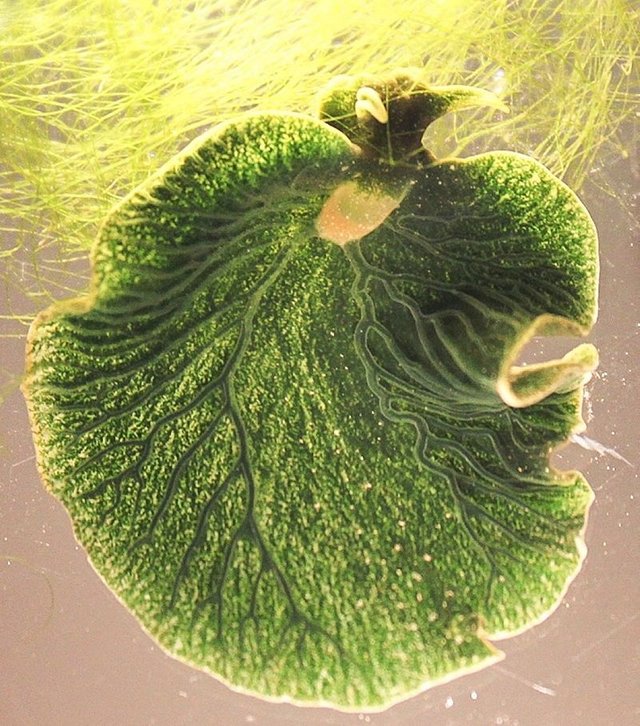
The first animal on the list is the Eastern Emerald Elysia (Elysia chlorotica), a small-to-medium-sized species of green sea slug found along the east coast of the United States, in salt marshes, tidal marshes, pools and shallow creeks, at depths of 0 m to 0.5 m
So, how does it harness the power of the sun? Well, pretty much like plants do, via photosynthesis! Maybe you are now thinking," This is BS, photosynthesis requires chloroplasts, animals don't have any!". Well.. E. Chlorotica does have chloroplasts!
How? Well, this little slug commonly feeds on a species of alga called Vaucheria litorea. When it punctures the algal cell wall with its radula, it holds the algal strand firmly in its mouth and sucks out the contents like using a straw! And here comes the interesting part! Instead of digesting the entire cell contents, it retains and stores the chloroplasts within its extensive digestive system. It's these chloroplasts that are later used to acquire energy directly from the sun!
Although these slugs are unable to produce chloroplasts by their own, the ability to maintain the chloroplasts that acquire from the algae they feed on, suggests that the species does have genes that support photosynthesis. Recent research suggests that the eastern emerald elysia has possibly acquired these genes through horizontal gene transfer.[3]
Initially, it was believed that E. chlorotica can, during time periods where algae is not readily available as a food, survive for numerous months thanks to its' photosynthetic abilities. However, further study on other similar species indicates that these sea slugs might do just as well when they are deprived of light. Without more research, we can't say for sure how important is the ability to photosynethize for E. chlorotica
2) Oriental Hornet
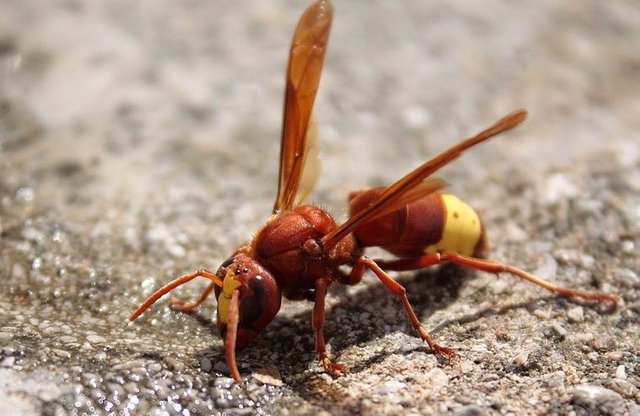
The oriental hornet (Vespa orientalis) is a social insect found in Southwest Asia, Northeast Africa, the island of Madagascar, Israel and parts of Southern Europe. It can also be found in a few isolated locations, such as Mexico, thanks to human introduction.
As you may well know, wasp and hornet species tend to be the most active during the early morning. However, these hornets get most of their work done in the midday! As you probably guessed, it has something to do with the intensity of the sunlight!
This hornet has a special outer layer (cuticle) that allows it to harvest solar energy! As you can see in the photo, the insect has a yellow and a brown part, and both of them play an important role in this process.
The yellow parts (in the head and abdomen) are rich in a pigment called Xanthopterin. This pigment is usually found in the wings of butterflies and the urine of mammals. However, it also has a very unique function in oriental hornets.
According to a recent study, [5] it functions as a light harvesting molecule, that transforms sunlight into electrical energy! How exactly this energy is used is still a mystery. It is assumed that part of it might be transformed in a photo-biochemical process which aids the species with flying, digging and other high-demand activities. Furthermore, most of the insect's metabolic activity occurs in the area with the yellow pigment layer, indicating that the sun-provided energy also contributes to metabolic-related functions.
As for the brown tissues, they appear to be incapable of directly harnessing the sun's energy. However, they still do their part. Structural analysis has shown that they are covered in grooves that trap light. It is estimated that only 1% of the light that strikes on the brown parts of the body is reflected away.
3) Pea Aphid (Acyrthosiphon pisum)
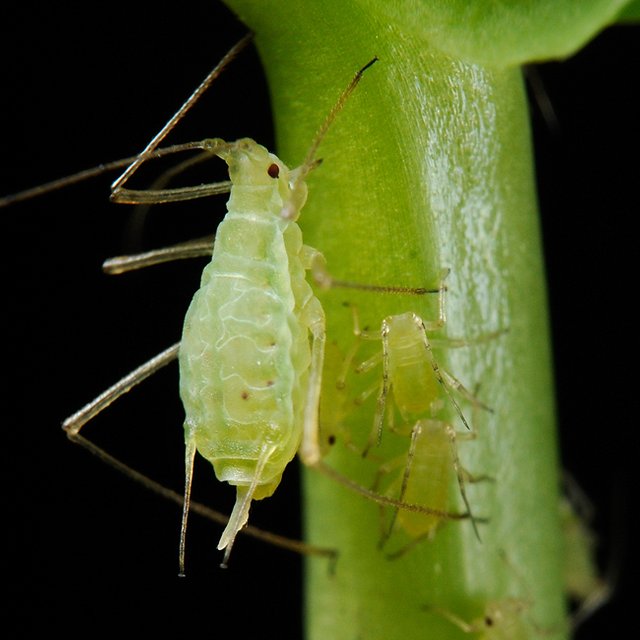
Next comes a critter that you probably already know, the pea aphid (Acyrthosiphon pisum). These annoying little pests are actually quite weird. They can be born pregnant and males sometimes have no mouth, causing them to die just after mating! But these are just some of their oddities.
They're also one of the only two known animals (the other one being spider mites) known to synthesize carotenoids, a pigment typically produced by plants, algae, as well as some bacteria and fungi. This ability was gained through horizontal gene transfer from fungi. [6] One of the key roles carotenoids have in plants is to absorb light energy for use in photosynthesis. So, the golden question is.. Can pea aphids photosynthesize?
A study in 2012 [7] set out to provide answers. The study examined three different types of pea aphids: green with high levels of carotenoids, orange with intermediate levels and white with low leves of carotenoids. When researchers measured their ATP levels, they found that the green aphids produced significantly more ATP than white aphids. Furthermore, the orange aphids produced more ATP when exposed to sunlight than when moved into the dark. Although this does not give a definite answer to the question it does strongly suggest that aphids can synthesize energy directly from sunlight. Maria Capovilla, co-author of this study, has theorized that this ability might function as an emergency energy source when aphids travel from plant to plant.
4) Spotted Salamander
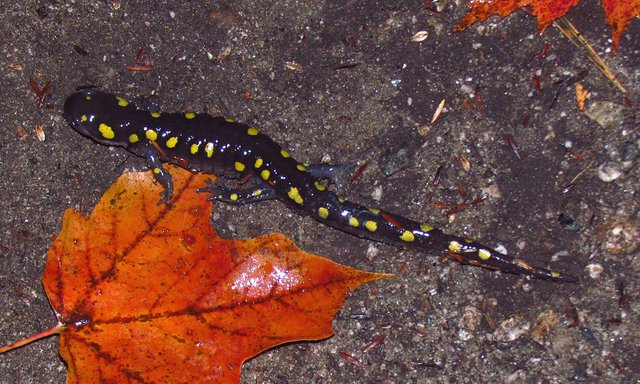
The next creature on the list is the spotted salamander (Ambystoma maculatum), a commonly occurring creature in the eastern United States and Canada. This animal has long been suspected to be in a symbiotic relationship with photosynthetic algae. It was actually more than 100 years ago, in 1888, when biologist Henry Orr first reported that the species' eggs often contain Oophila amblystomat, a single-celled species of green algae.
Up until recently, the exact nature of this symbiotic relationship was a total mystery. It wasn't until 2011, when researchers found that algae didn’t just reside on the cellular surfaces, as previously thought. Instead, it lived inside the embryos! It was a part of the animal from birth to death!
Two years later, another study came to shed light into this symbiotic relationship. In this study, the researchers studied two groups of incubated eggs, one in the presence of light and one in darkness. In both groups, the water was rich in a radioactive carbon isotope. In the presence of light, the embryos were found to be radioactive and produced radioactive glucose. In the abscence of light, which is a requirement for photosynthesis the embryos were not radioactive and no radioactive glucose was produced. [9]
This finding shows that at least in the embryotic stage spotted salamanders are capable of alga-powered photosynthesis. However, some questions do remain. We still don't know for example if the algae is passed down from the parents and how important is its' presence during adulthood!
5) Mint sauce worm
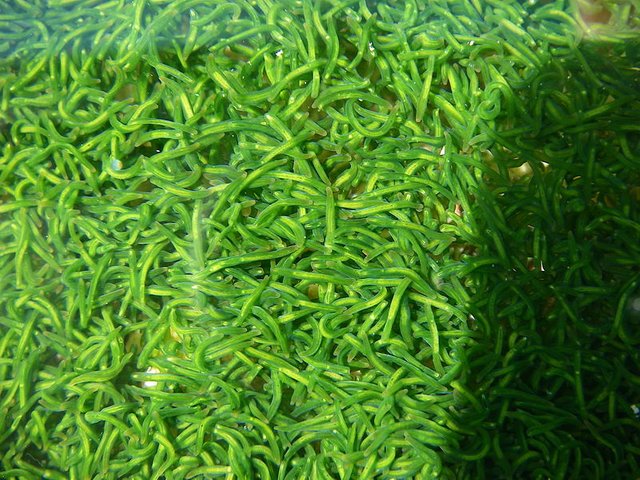
And we have reached the last animal on the list, the mint sauce worm (Symsagittifera roscoffensis)! S. roscoffensis is a small (about 15 mm long) green flat worm, found in shallow water on sheltered sand beaches along most of the Atlantic coast of Europe.
This one works similarly to the Eastern Emerald Elysi, although the algae does survive the process :)
The worm assimilates the algae, Tetraselmis convolutae into its parenchymal cells, giving it the green colour. Unlike the Emerald Elysia, this one relies entirely on the nutrients made by the algae. This is probably why they spend their time in swallow water, where the algae can absorb sunlight. The worm provides shelter and some nutritional benefits in return.
The End?
After doing plenty of research I believe that I found most, if not all of the animals that are cabable of harnessing the power of the sun, one way or the other! Maybe I missed a few. If you know of any other please leave a comment. I'd love to check it out! And let's not forget. The world of animals is full of mysteries. Maybe there are dozens of known and unknown creatures that harness the power of the sun as we speak in ways we can't imagine!
References & Further Reading
- https://www.ncbi.nlm.nih.gov/pmc/articles/PMC37991/
- https://en.wikipedia.org/wiki/Elysia_chlorotica#cite_note-Mujer-5
- http://www.pnas.org/content/105/46/17867.abstract
- https://asknature.org/strategy/photovoltaic-pigments-harvest-solar-energy/#.WZE_WFEjHIU
- https://www.ncbi.nlm.nih.gov/pubmed/21052618
- http://science.sciencemag.org/content/328/5978/624
- http://www.nature.com/news/photosynthesis-like-process-found-in-insects-1.11214
- http://www.pnas.org/content/108/16/6497.abstract
- http://jeb.biologists.org/content/early/2012/09/26/jeb.076711.full.pdf
SteemSTEM
Please consider supporting the @steemstem project. SteemSTEM is a community driven project which seeks to promote well written/informative Science Technology Engineering and Mathematics postings on Steemit. Click here to join the chat and learn more! The steemstem project is run by @justtryme90, @lemouth and some other cool guys & gals :)
More Strange Animals To Come
I will be posting one new strange animal each every day so if you enjoyed this post make sure to follow me and let's discover together some of the world's most strange and bizarre creatures! An upvote and resteem would be nice too :P In the meantime, you may enjoy reading about the fungus that turns ants into zombies, the helicopter-like Brazilian Treehopper and learn why the Naked Mole Rat is the world's strangest mammal!
P.S. Inspiration for this post was this article by @alpharay
I think we all are solar powered to a degree :)
I would love to use worms for solar power, would be cool! Iwonder if they could engineer them to give power and also clean up toxic chemicals(like filter toxins from waste dumps and such).
Would be a win win! worms eat toxins/garbage, and are solar powered, and create electricity!
Some scientists are actually genetically modifying worms to eat plastic! They plan to use them to clean up plastic waste in dumps and other areas.
The first 1 if studied enough would have so many applications, taking chloroplasts from the algae it eats and then using it, sounds like Kirby.
Just think if humans could do something similar.
And the oriental hornet, replenishing its energy through the sun, awesome!
You have to always leave the best and funniest comments right? 😂😂😂😂
It's what do, my way to show support and humor 😁😂🤣
Like kirby LOL...smash bros.
Wow..I like this one...
Thanks! Stay tuned! :)
I think most insects die when they mate bro...And I can see the effort you've done.
Thank you very much. :D
Very interesting post. i didn't know before that they use the solar energy.
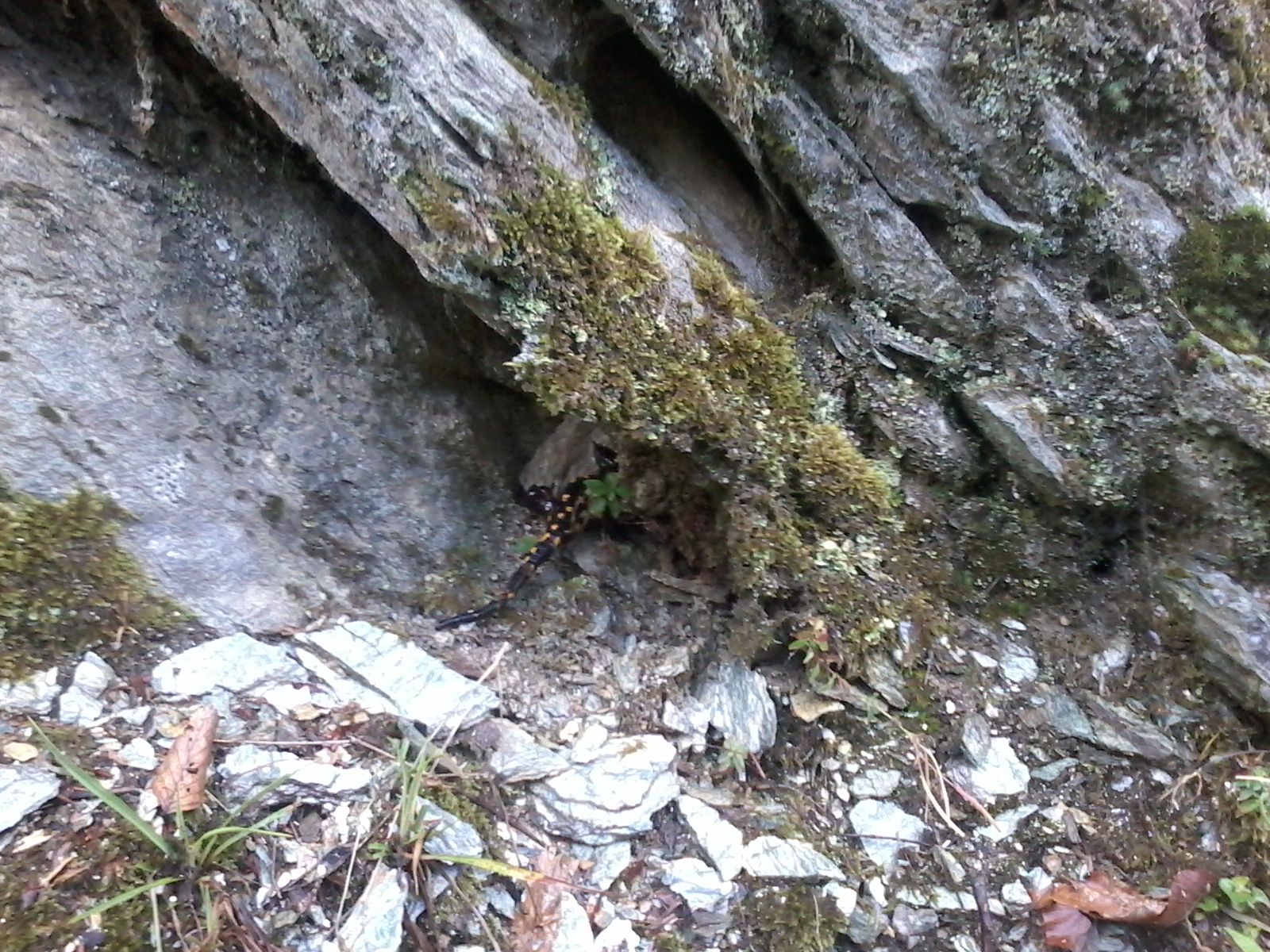
One Spotted Salamander from me
Is this photo taken in Greece? If yes my guess is that it's a fire salamander https://en.wikipedia.org/wiki/Fire_salamander
But still, thanks for the comment. Happy you learned something new :D
Yes in Greece i found it on the mountain of Pelion. I don't know if there is Spotted Salamander in Greece but it looks like Spotted.
The last animal has to have a relation to the Borg in Star Trek... assimilating algae?
All your chloroplasts are belong to us!
hEhehehEE yeah
good post.
follow me @goga
You need to gogaway, or yougo bega flago lolgo
so you read all this in less than 15 seconds? You must be a special kind of genius. @steemcleaners
This post has received a 0.63 % upvote from @drotto thanks to: @banjo.
@trumpman got you a $1.72 @minnowbooster upgoat, nice! (Image: pixabay.com)
Want a boost? Click here to read more!
Another great article @trumpman! We can't wait for more! Keep up the good job!